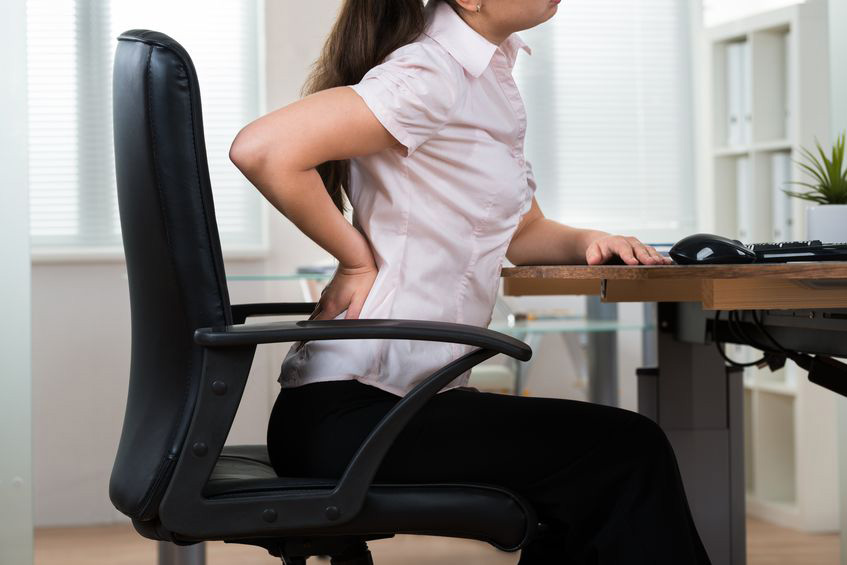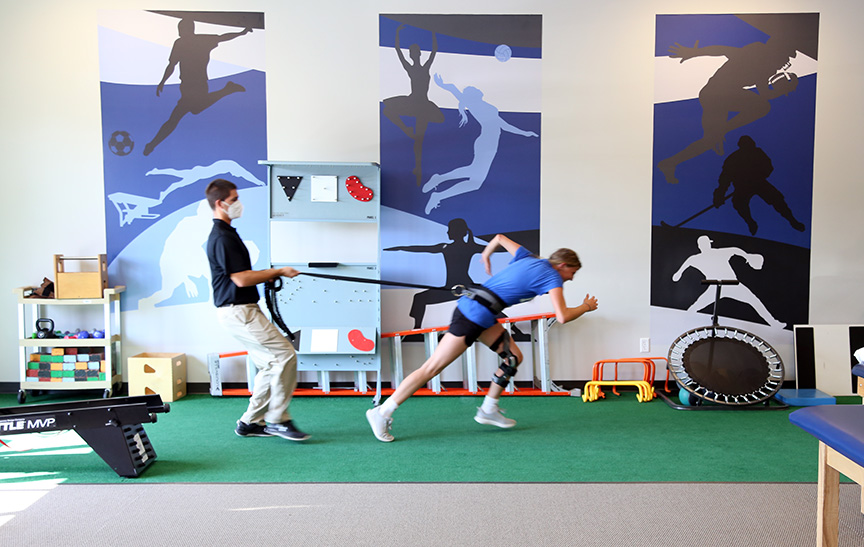News

Back Pain Mythbusters
Experts estimate that as much as 80% of the population will experience a back problem at some time in their lives. In fact, back pain is the second most common reason for visits to the doctor’s office, outnumbered only by upper-respiratory infections.
Jordan Kershaw, PT, DPT at our St. Elizabeth Sports & Physical Therapy-Southwest clinic breaks down some of the most common back pain myths he hears daily.
Myth: “My back hurts because something is out of place.”
Extensive research has shown that joints of your body, including vertebrae and sacroiliac joints, do not become “out of place” and cause pain. For that reason, no clinician can put your joints back into place. This is commonly told to patients and is not only misleading, but can cause a lot of fear and beliefs that the back is fragile. Getting your joints “popped” or manipulated CAN bring temporary pain relief, just keep in mind that nothing is being put back into place, and this is not a permanent fix for your pain. It is important to keep in mind that the spine is very strong and resilient.
Myth: “I need an MRI since I hurt my back.”
Imaging can be very useful in the diagnosis and treatment of your back pain, however, it is not needed for the majority of injuries. A recent review looked at the prevalence of abnormalities on MRIs of people without pain. They found disc degeneration was found in 37% of 20-year-olds and 96% of 80-year-olds. They also found that disc bulges were found in 30% of 20-year-olds and 84% of 80 year-olds1. Keep in mind, these findings were on individuals WITHOUT pain. So just because you have been told you have abnormalities, it does not always mean that: #1 the abnormalities are the cause of your pain, and #2 that you cannot be pain-free until they are surgically “fixed”.
Myth: “I hurt my back and will now have back pain the rest of my life.”
Here is the good news, the large majority of low back injuries fully resolve without life-long disability and pain. You can rehab your back and prevent re-injury by strengthening your back and improving flexibility with the help of your physical therapist.
Myth: “My pain is severe because the damage is severe.”
While low back pain can be very severe, there are many other factors that contribute to pain. Research has shown that poor sleep, stress, fear in regards to your pain, and lack of physical activity all contribute to pain and make it more severe. All of these “ramp up” your nervous system and make you much more sensitive. Then all of a sudden, activities that would normally not be painful, become painful. And activities that would normally be slightly uncomfortable, now become very painful. You can drastically improve your pain by simply getting on a good sleep schedule, reducing stress, performing physical activity within your comfort level, and reassuring yourself that pain does not always equal damage.
Myth: “I will need surgery to get rid of my back pain.”
While surgery can be very successful in bringing pain relief, it is not always necessary and rarely the first line of treatment for back pain and injury. One study found that 90% of patients with disc herniations had good outcomes with non-operative management and did not need surgery2. But please follow the recommendations of your physician.
Myth: “I should always keep my back straight and avoid lifting heavy things.”
These may be proper recommendations after an initial back injury or surgery, but people without any restrictions should not be afraid of these activities. Constantly “bracing” your core and keeping your back straight at all times is overkill for most daily activities and can even make your pain worse. Lifting heavy objects is good for strengthening the back and preventing back injury. However, lifting too much too quickly can lead to injury, so it is always best to start light and gradually increase weight.
All this being said, medical management of back injuries is not “one size fits all” so you should always follow the instruction of your physician and/or surgeon. But for most back injuries, all of our clinics have many qualified physical therapists who can help get you moving and pain-free again.
References
- Brinjikji W, Luetmer PH, Comstock B, Bresnahan BW, Chen LE, Deyo RA, Halabi S, Turner JA, Avins AL, James K, Wald JT, Kallmes DF, Jarvik JG. Systematic literature review of imaging features of spinal degeneration in asymptomatic populations. Am J Neuroradiol. 2015 April 36(4):811-6.
- Saal JA, Saal JS. Nonoperative treatment of herniated lumbar intervertebral disc with radiculopathy. An outcome study. Spine (Phila. Pa. 1976) 14, 431–437 (1989).

